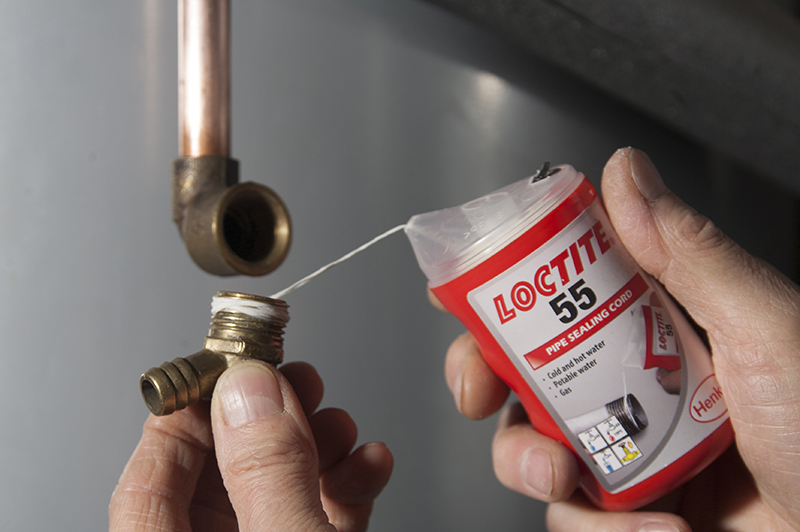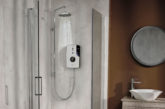
Sealing threads to prevent leaks is an everyday job for most plumbers. PHPI speaks with Colin Chapman, Regional Product Manager, UK & Ireland at Henkel, to find out more about some of the options available within the Loctite brand.
HENKEL produces a range of LOCTITE thread sealers – which are most applicable to domestic plumbers?
LOCTITE sealants are widely used throughout industry for maintaining critical plant and this technology now benefits many trades too. The most applicable to domestic plumbers are LOCTITE 55 sealing cord and LOCTITE 5400, a hazard-label free anaerobic thread sealing compound. The cord is ideal for general purpose sealing but the adhesive is the best choice when the joint needs to be locked against self-loosening.
Henkel can supply specific grades of anaerobic sealants for use with potable water, gas, LPG and heating oils. In practice, however, LOCTITE 5400 meets the needs of the lion’s share of domestic applications which involve metal fittings.
Another popular product is LOCTITE 5075 insulating and sealing silicone wrap. This is ideal for a late-in-the-day call out to a hot water tank with leaking fittings. It provides a fast and effective temporary fix for sealing joints or pipes leaking under mains water pressure. As the product can be stretched by 300% it creates a silicone rubber tourniquet around the damaged area.
What is your view on some of the other options?
One of the oldest methods of sealing threads is with non-curing pipe pastes. Although they lubricate and compact into the threads, creating a seal, they provide no locking. The paste can also squeeze out under pressure, has poor solvent resistance and does not work on parallel threads.
Solvent-based sealing compounds also lubricate and compact into threads, creating a seal, but fittings must be re-torqued to minimise voids. Their biggest disadvantage is they shrink during cure, as the solvents evaporate, compromising the efficiency of the seal.
PTFE tape gives a good initial seal and resists chemical attack. And although its ability to act as a lubricant is an advantage in one respect, this action also prompts fittings to loosen under dynamic loads causing loss of clamping force and leakage. It encourages over-tightening of fasteners, adding stress or fracturing parts.
Its tendency to shred also makes it unsuitable for use in hydraulic systems and this can clog key apertures and lead to maintenance problems.
The hemp and paste method has been used for many years but it is messy and fiddly, requiring a degree of experience and technique to achieve a complete seal. Another disadvantage is it cannot be used on fittings carrying potable water.
What do you consider to be the advantages of using LOCTITE 55 sealing thread and over other solutions?
The main reason why LOCTITE 55 is so popular and continues to attract new users is that it seals threaded fittings – metal or plastic – quickly, cleanly and cheaply. It creates a non-curing and immediate, high pressure seal on all coarse threads but also allows reliable adjustment.
LOCTITE 55 has EN751-2 Class ARP certification for the gas industry and WRAS approval (1612522) for use with potable water to 85°C.
How many turns are recommended?
The number of turns is governed by the thread size and a guide is provided on the pack. A single 160m will seal up to 405 joints with a half-inch thread size.
Can it be repositioned once tightened up?
Yes, that’s one of its advantages. It can be backed off by 45° without fear of leakage.
What are the main applications for LOCTITE 5400?
This is a single component product that relies on the absence of air and contact with metal to make it cure. This is achieved by the sealant displacing the air gaps between the threads. Unlike other sealing systems, including LOCTITE 55, this adhesive also locks the fitting to resist vibrational loosening.
When LOCTITE 5400 is applied to a taper parallel thread and wrenched tight it provides an instant seal. So, if needs be, the system can be pressurised straight away. It also protects the mated threaded areas against corrosion.
The key differentiator for this product is that it is hazard-label free, part of the LOCTITE Health and Safety range. It is therefore Henkel’s front-line offering with products carrying health and safety symbols only being called in where a specific performance characteristic is required.
What is the recommended application process?
For best results, clean all surfaces with a cleaning solvent and allow to dry. If the material is an inactive metal or a faster cure speed is required, spray with an activator such as LOCTITE 7471 or 7649.
Apply a 360° bead of LOCTITE 5400 to the leading threads of the male fitting, leaving the first thread free, and thoroughly filling all voids. For bigger threads and voids, apply a bead of product to the female threads also.
Assemble and wrench tighten the fitting to create an instantaneous seal to moderate pressures. For maximum pressure and solvent resistance allow the adhesive to cure for 24 hours.
Up to what pressure can LOCTITE 5400 be used?
68978 kPa (10,000 psi) or to the burst pressure of the pipe.
Can it be used on potable water?
Yes, it is WRAS approved (191152) for use with potable water up to 85°C.
Once cured can the fitting be removed again?
Yes, the seal can be released at any time using compliant practices.













